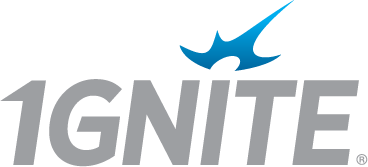3 ReCommerce Metrics Retailers Should Focus On
The Key to building a strong program
Reverse Commerce, also known as ReCommerce, involves the resale of previously owned, returned, or repaired goods. The need to establish strong ReCommerce metrics is driven by the significant increase in the number of used goods reintroduced in the supply chain over the past few years, stressing supply chain management.
The volume of material currently handled by ReCommerce programs is staggering and it’s growing exponentially every year. The 2020 National Retail Federation Study showed that in 2020, the value of returned goods to retailers exceeded $428 billion or 10.6% of total US retail sales. The amount associated with online sales was even higher: 14% of total online sales, or $102 billion.
For retailers, it is essential to establish key ReCommerce metrics to help them understand the root cause of the issues, accurately measure the cost to handle returned goods and excess inventory, as well as understanding how to leverage modeling techniques to answer critical questions and continuously improve the financial and environmental impacts of their effort.
In addition, retailers are embracing ReCommerce as a means to increase engagement with consumers, transition to circularity, and reduce waste.
Retailers who want to fully benefit from a ReCommerce Program must have full visibility of the program’s performance. This requires creating KPI and tracking Key ReCommerce metrics daily, weekly, and monthly – for both returned goods and excess inventory in order to optimize the programs and quickly react to changes in the marketplace.
In addition, strong ReCommerce metrics will allow retailers to track the impact on their bottom line, create reliable modeling tools to make necessary adjustments, as well as create goals to effectively communicate with other departments or the executive suite.
Below Is A List Of 3 ReCommerce Metrics That Every Retailer Should Track Consistently:
Metric # 1. Volume And Value Of Returned Goods And Excess Inventory As A Portion Of Total Goods Sold
The first metric is pretty straightforward. You want to track the number of returns and account for their value over time. Ideally, you would not only track the data at the enterprise level but also break it down by channel to see the difference between online and in-store channels.
The national retail federation study provides a valuable industry benchmark to help you assess how the percentage of returned goods in your operation compares to the national average.
The National Retail Federation 2020 Survey revealed that:
“ For every $1 billion in sales, the average retailer incurs $106 million in merchandise returns. Additionally, for every $100 in returned merchandise accepted, retailers lose $5.90 to return fraud. “
Metric # 2: Volume And Value Of All Returned Products And Excess Inventory By Disposition Method
The second building block provides visibility on how the returned goods are handled. Retailers need to quantify the following metrics:
- Volume and value of returned products that were resold as is.
- Volume and value of returned products that were resold after being repaired.
- Volume and value of returned products that were donated.
- Volume and value of returned products that were recycled.
- Volume and value of returned products that were landfilled.
It is essential to capture information at this level of granularity in order to identify means to improve the return program, potentially identify flaws in the products themselves, have accurate information for your company sustainability report, and quantify the pros and cons of shifting volume among the disposal methods.
ReCommerce Metric # 3: Turnaround Time ( TAT) Cost To Collect, Segregate, Repair, Store, Price, And To Market Returned Good And Excess Inventory
To accurately measure the cost to collect, segregate, repair, store, price, and remarket returned goods – a retailer must capture the warehouse, handling, and labor costs associated with receiving, segregating, and preparing returned goods. For example, you would want to measure the monthly rental equivalent cost of the warehouse space allocated to collect the returned goods, as well as the labor cost to handle, palletize, prepare, repair, and package the returned goods for resale, recycling, or donation.
With the 3 Key ReCommerce metrics listed above tracked consistently, a retailer is able to run 4 optimization scenarios below and answer each question with facts instead of estimates:
Should we repair or recycle?
To answer this question, retailers would compare with the value of repairing goods for resale the value of the recycling process and take into consideration the cost associated with repairing goods and remarking them as a percent of the retained value of the goods.
Does it make financial sense to repair and resell instead of donating or recycling the goods?
In order to identify the correct approach, retailers would analyze the value and the cost associated with repairing and reselling goods versus the proceeds from the recycling process. Then, it is essential to quantify how much your company values the environmental benefits of repairing and reselling or donating vs recycling or landfilling.
Should we capture the maximum value of each item, or should we get rid of everything quickly?
Retailers are constantly seeing to optimize warehouse space and reduce handling costs associated with returned goods, excess inventory, or unused store assets. While high velocity is attractive, what is the tipping point where retailers should allocate more resources to increase the value of the loads?
Retailers will start their analysis by looking at the retained value from mixed loads sent to liquidation channels vs separated loads. The analysis needs to also take into account the cost to sort, prepare individual items for online liquidation platforms, the cost associated with storing inventory longer at a percent of retained value vs. costs to keep loads mixed, sold as-is – which is faster but at a lower value as a percent of retained value.
Should we sort waste to increase the recycling rate and value, or should we mix everything together to get rid of it quickly?
The tradeoff between quality and quantity also applies to the recyclable material generated by the store operation and specifically by the returned and re-commerce program.
Retailers would need to quantify the volume of waste and recyclable material generated by the specific operation. Then Look for circular processing options where the material could be processed into the raw material used by your brand’s packagers. Additional options would include offering a mail-back return program to incentivize high-value material to be returned from the consumers.
Once the options are laid out, the retailer would also need to account for the labor and handling cost associated with sorting recyclable materials to minimize contamination and secure high value. The final data points needed to answer the question is the difference in the value of separated recyclable materials vs, mixed.
You can see how the 3 essential metrics become building blocks to measure the efficacy of a ReCommerce program as well as continuously improve it.
Implementing a ReCommerce program that is robust on all fronts is a very difficult task to accomplish by relying solely on the internal expertise of your already thinly stretched employees. Unless you have a team of ReCommerce gurus on staff, your program will only be as successful as the experience level of the people running it. So, why not choose an expert in the industry?
Successful brands are following those 5 best practices and are leveraging the expertise of third-party vendors to liquidate excess inventory while minimizing the environmental impact, leveraging alternative supplier networks, supplementing their transportation group to establish a faster last-mile delivery, and optimizing the efficiency of their reverse logistics groups. Regardless of where you are in the decision-making process, it is critical that you implement core KPIs and include Key ReCommerce metrics so that you can accurately measure the impact of the program and make fact-based decisions.
1GNITE has successfully established ReCommerce programs for some of the largest retailers in the country, adding tens of millions of dollars to their bottom lines every year. Contact us when you are ready to get the most out of ReCommerce
-
ReCommerce Ultimate Guide and 2022 Trends
-
The Only 3 ReCommerce Metrics Retailers Should Focus on in 2022
-
5 Ways To Build A Strong ReCommerce Program
-
New ReCommerce Opportunities from Supply Chain Disruptions
-
4 Proven Steps to Successfully Implement an Internal Marketplace
-
5 Benefits of an Internal Marketplace You Must Know
-
2021 1GNITE Solutions Year In Review
-
The Top 5 2022 Trends in Facility Management: How To Make Them Work To Your Advantage
-
5 Important Store Refresh Best Practices For Retailers to Achieve Success in 2022










